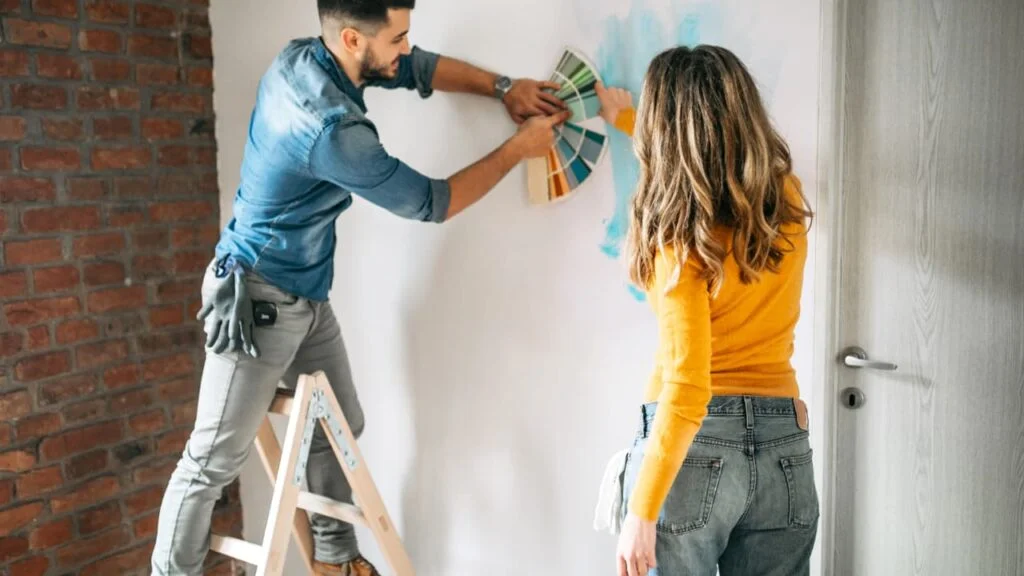So you’ve got some painting to do, and you’re wondering whether using a paint sprayer indoors is a viable option. Well, good news! In this article, we’ll explore the possibility of using a paint sprayer inside your home, exploring the benefits, considerations, and safety precautions involved. By the end, you’ll have a clearer understanding of whether a paint sprayer is the right choice for your indoor painting projects. So let’s get started and uncover the truth about using a paint sprayer indoors!
Can I Use A Paint Sprayer Indoors?
Table of Contents
Understanding Paint Sprayers
Paint sprayers are versatile tools that can make painting projects faster and more efficient. They work by atomizing paint into tiny droplets and spraying it onto a surface, resulting in a smooth and even finish. In recent years, paint sprayers have become increasingly popular among homeowners and professionals alike due to their ability to save time and effort.
Types of Paint Sprayers
There are several types of paint sprayers available on the market, each with its own unique features and advantages. The three most common types are airless paint sprayers, HVLP (High Volume Low Pressure) paint sprayers, and compressed air sprayers.
- Airless Paint Sprayers: These sprayers use a piston pump to pressurize the paint, forcing it out through a small opening in the spray gun. Airless sprayers are known for their high speed and ability to handle thick paints and coatings.
- HVLP Paint Sprayers: HVLP sprayers use a high volume of air at low pressure to atomize the paint. They are popular for their fine finish and reduced overspray, making them suitable for detailed work and indoor projects.
- Compressed Air Sprayers: These sprayers use compressed air to propel the paint onto the surface. While they can provide a high-quality finish, they tend to produce more overspray and are less efficient compared to airless and HVLP sprayers.
Advantages of Using a Paint Sprayer Indoors
Using a paint sprayer indoors offers several advantages compared to traditional methods such as brushing or rolling.
- Time Efficiency: Painting with a sprayer is significantly faster than using a brush or roller. The spray pattern covers a larger area in a shorter amount of time, allowing you to complete your project in no time.
- Smooth and Even Finish: Paint sprayers produce a fine mist of paint that results in a smooth and even finish. This is especially beneficial when painting large surfaces such as walls or ceilings.
- Versatility: Paint sprayers are versatile tools that can be used for various projects, including furniture refinishing, cabinet painting, and even art projects. They allow you to achieve professional-looking results with ease.
Disadvantages of Using a Paint Sprayer Indoors
While using a paint sprayer indoors has its advantages, there are also some disadvantages to consider.
- Overspray: One of the main concerns when using a paint sprayer indoors is the potential for overspray. If not properly controlled, the mist of paint can spread beyond the intended area, leading to paint particles settling on nearby objects and surfaces.
- Masking and Covering: Painting indoors with a sprayer requires thorough masking and covering of surrounding surfaces and furniture to protect them from overspray. This can be time-consuming and may require extra materials.
- Cleanup: Paint sprayers require thorough cleaning after each use, which can be a more involved process compared to cleaning brushes or rollers. Proper maintenance of the sprayer is essential for its longevity and optimal performance.

Preparation Before Using a Paint Sprayer Indoors
Before using a paint sprayer indoors, it is important to properly prepare the area and ensure a safe environment.
- Clear the Area: Remove any furniture, fixtures, or objects that are not being painted from the room. This will minimize the risk of accidental overspray and make the painting process easier.
- Cover and Mask Surfaces: Use drop cloths and plastic sheeting to cover the floor, furniture, and fixtures that cannot be removed from the room. Masking tape can be used to secure the coverings and create clean lines.
- Repair and Clean Walls: Inspect the walls for any damages or imperfections and repair them before painting. It is also important to clean the walls thoroughly to ensure proper paint adhesion.
Choosing the Right Paint
Selecting the right paint for your indoor project is crucial for achieving the desired results with a paint sprayer.
- Consider the Surface: Different surfaces may require specific types of paint. For example, walls may require a different paint than furniture or trim. Consult with a professional or the paint manufacturer to determine the most suitable paint for your project.
- Check for VOC Content: Volatile Organic Compounds (VOCs) are chemicals commonly found in paints that can emit harmful fumes. Opt for low or zero VOC paints to ensure better indoor air quality and minimize health risks.
- Paint Quality: Choose a high-quality paint that is recommended for use with sprayers. Paints specifically formulated for spraying will provide better coverage and minimize clogging or splattering issues.
Protective Measures
Before using a paint sprayer indoors, it is important to ensure personal safety by taking appropriate protective measures.
- Safety Gear: Wear protective clothing, long sleeves, gloves, safety goggles, and a respirator or mask to prevent inhalation of paint fumes and overspray.
- Ventilation: Open windows and doors to promote air circulation and ensure proper ventilation. Additionally, consider using fans or air purifiers to further improve air quality.
Setting up the Work Area
A well-organized work area can greatly facilitate the painting process and help maintain a clean environment.
- Spray Booth or Tent: If possible, set up a spray booth or tent to contain the overspray and minimize the risk of paint particles settling on surrounding surfaces.
- Proper Lighting: Ensure adequate lighting to accurately see your work and identify any missed areas or imperfections.
- Easy Cleanup: Place a drop cloth or tarp underneath the work area to catch any drips or overspray. This will simplify cleanup and protect the floor from potential damage.
Ensuring Proper Ventilation
Good ventilation is crucial when using a paint sprayer indoors to prevent the buildup of paint fumes and ensure a safe environment.
- Open Windows and Doors: As previously mentioned, open windows and doors to allow fresh air to enter and stale air to exit the room. This will help dissipate paint fumes and maintain air quality.
- Create an Airflow Path: Place fans strategically to create an airflow path that directs the paint fumes away from your work area and towards the open windows or doors.
- Use Exhaust Fans: If available, turn on exhaust fans in the room or adjacent areas to further enhance ventilation.
Tips for Using a Paint Sprayer Indoors
To make the most of your indoor paint spraying experience, here are a few helpful tips:
- Practice: Before starting your project, practice using the paint sprayer on a scrap piece of cardboard or wood to familiarize yourself with the spraying technique and adjust the settings as needed.
- Maintain Proper Distance: Keep the sprayer nozzle at a consistent distance from the surface being painted. Strive for a distance of 6-10 inches for optimal spray coverage.
- Overlap Strokes: When spraying, overlap each stroke by about 50% to ensure even coverage and avoid streaks or missed spots.
- Maintain a Steady Speed: Move the sprayer at a steady, consistent speed to achieve an even coat of paint. Rapid or slow movements can result in an inconsistent finish.
- Clean the Sprayer Thoroughly: After each use, clean the paint sprayer according to the manufacturer’s instructions. This will prevent clogging and ensure its longevity.
Using a paint sprayer indoors can be an efficient and effective way to transform the appearance of your living space. By understanding the different types of sprayers, taking necessary precautions, and following best practices, you can achieve professional results with ease. Happy painting!

Upgrade Your Painting Game
Explore our Introduction To The Best Paint Sprayers guide to take your projects to the next level!

